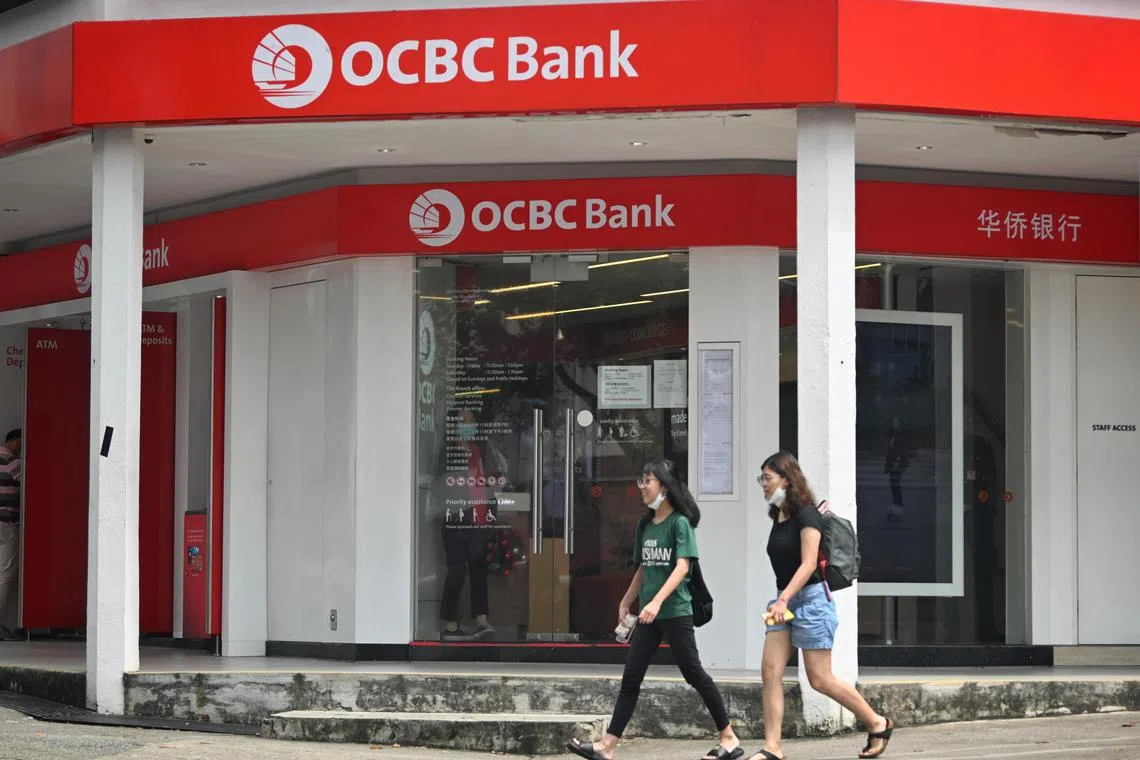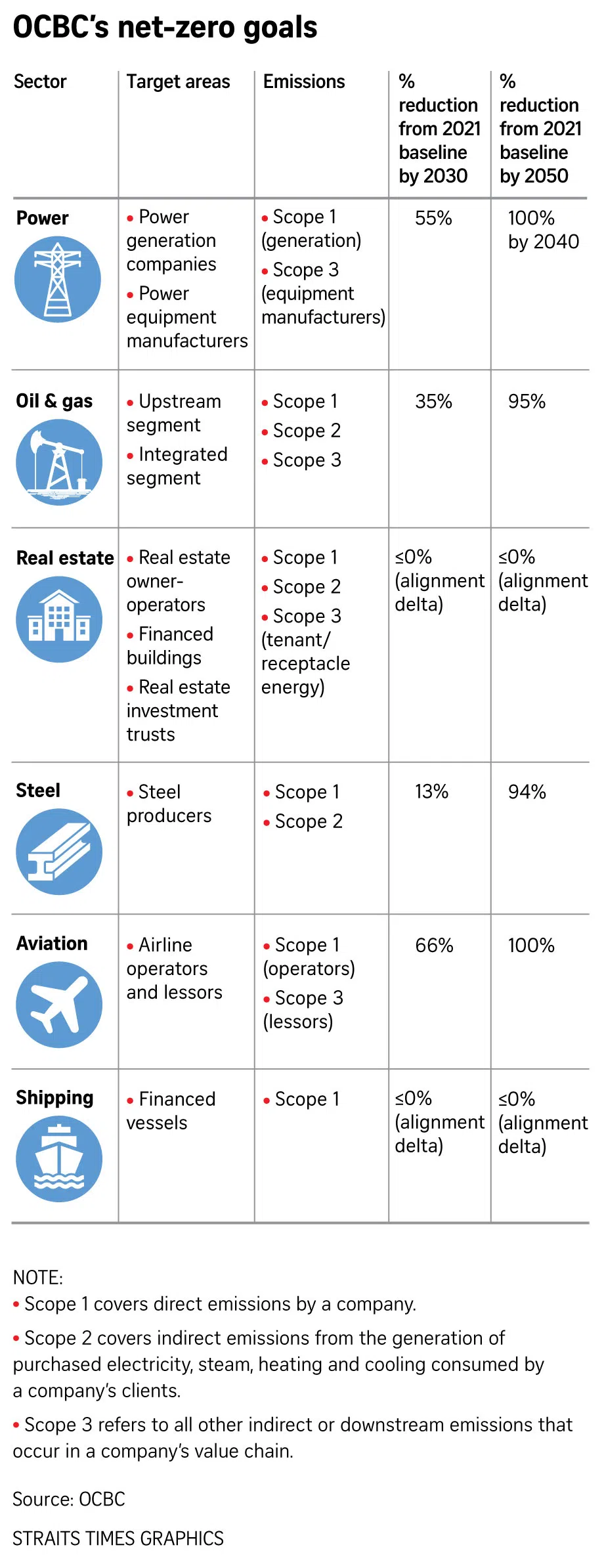OCBC makes decarbonisation pledge in six sectors, including oil and gas
Sign up now: Get ST's newsletters delivered to your inbox

To help customers decarbonise more quickly, OCBC will develop financing solutions for corporate clients to finance their green and transition business activities.
PHOTO: ST FILE
Follow topic:
SINGAPORE – Singapore-listed lender OCBC Bank on Tuesday pledged to embark on decarbonisation targets in six carbon-intensive sectors, in a move that will see it join the other two local banks in their net-zero quests.
The six sectors that the bank finances that emit the most greenhouse gas are: power, oil and gas, real estate, steel, aviation and shipping.
They make up 67 per cent of OCBC’s corporate and commercial banking loan portfolio, but only 42 per cent of the portfolio falls within the scope of targets.
In a bold move, OCBC will not extend project financing to upstream oil and gas projects that obtained approval for development after 2021. This is on top of a target to reduce absolute emissions from its portfolio by 35 per cent by 2030 and by 95 per cent by 2050, it said in its report titled Partnering Clients Towards A Net Zero Asean And Greater China.
Mr Mike Ng, head of OCBC’s global wholesale banking sustainability office, noted at a briefing that while revenue will be impacted, it is not the main consideration. “It is just a commitment we want to make, so I think the revenue was a secondary consideration,” he said.
OCBC group chief executive Helen Wong, who said the targets are “ambitious, quantitative and grounded in science”, added that as the bank helps customers become greener, there will be other parts of the bank’s portfolio that will bring in revenue.
Singapore, known as the oil hub of Asia, is trying to switch from black gold to green energy as it seeks to become carbon-neutral by 2050,
The country was ranked the world’s sixth-biggest exporter of refined petroleum in 2021, based on data from the Observatory of Economic Complexity.
OCBC aims to achieve a target metric or “alignment delta” at or below zero by 2030 for real estate, which is the single biggest sector of the six in its portfolio, as well as for shipping.
Alignment delta is derived based on emission intensity or the emissions per unit of output. The targets are expressed in percentage terms to measure how far above or below the reference pathway the emission intensity is.
For the power sector, the bank’s target is to reduce emissions by 55 per cent by 2030, and to cut 100 per cent of emissions by 2040. This sector accounts for 40 per cent of greenhouse gas emissions globally.
In aviation, the goal is to lower emissions by 66 per cent by 2030, and completely by 2050.

The 2030 target for steel is to lower emissions by 13 per cent and to hit a 94 per cent reduction by 2050.
Asked how achievable the goals are with the other two local banks in mind, Mr Tan Teck Long, head of global wholesale banking at OCBC, said the reference pathway the bank has chosen is “science-based, credible and industry-supported”.
“I don’t think the other banks have set tighter targets,” he said, adding that the goals should be based on what the industries involved can achieve and be updated over time.
OCBC said the targets will be reviewed at least once every five years as climate science evolves and more data from clients become available.
To help customers decarbonise more quickly, the lender will develop financing solutions for corporate clients to finance their green and transition business activities.
It will also tap innovative technology solutions to quicken decarbonisation.
As part of efforts to help clients develop and invest in greener assets, the bank has offered bespoke sustainable financing such as the OCBC 1.5°C loan that was rolled out in March 2023.
As at end-March, the bank’s sustainable finance portfolio was $47 billion, near its 2025 goal of $50 billion.
OCBC’s net-zero targets follow DBS Bank’s pledge in September last year
More than 100 banks in the world, making up more than 40 per cent of global banking assets worth about US$65 trillion (S$86.8 trillion), have made the promise to align their lending and investment portfolios with net-zero emissions by 2050 under the United Nations-convened Net-Zero Banking Alliance. But many still have yet to set a clear timeline for achieving the goal.


